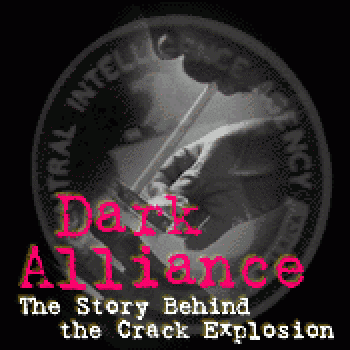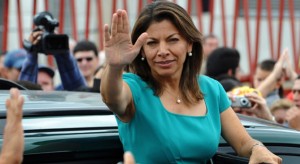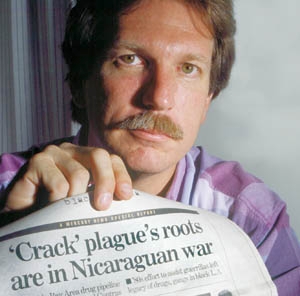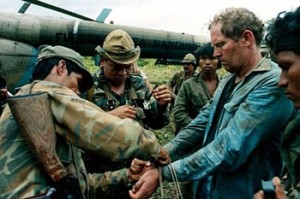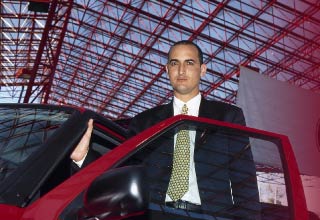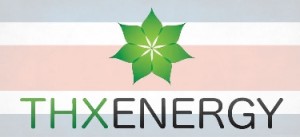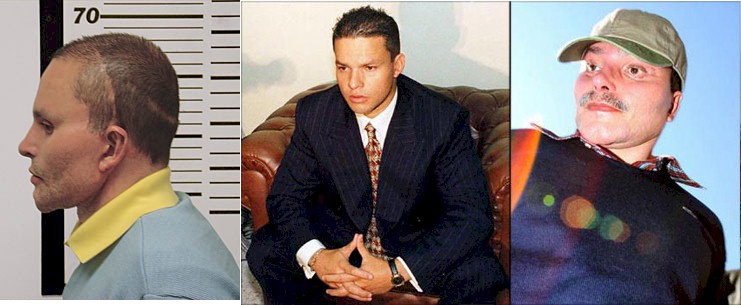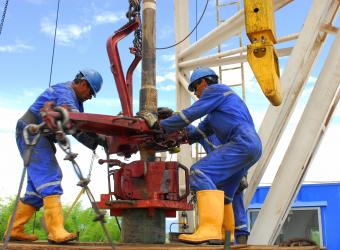Para quien crea que mirando las novelas de narcotraficantes sabe cómo funciona el mundo de las drogas y quien lo maneja, esta lectura es indispensable para darse cuenta que lo que sale en la televisión es pura basura comercial, marketing. La verdad jamás será dicha en series baratas mercantilistas, la verdad nunca será mostrada a los que creen en los noticieros o en cuentos de pseudo-expertos en drogas que andan dictando conferencias y ganando dinero mintiendo a la gente. El problema de la droga va más allá de capos conocidos, de humanos adictos o de legalización de la droga. La legalización no es la solución, es el inicio del conflicto, los verdaderos capos son dueños del mundo, ellos son los únicos beneficiados con la legalización, la adicción y la producción de drogas. Falta mucho por conocer pero estas lecturas pueden ser un inicio.
La noticia de que en una declaración de la DEA implicando al empresario de aviación Don Whittington de Fort Lauderdale en la negociación del ahora famoso jet Gulfstream II que se estrelló con 4 toneladas de cocaína en la península de Yucatán, a una operación oscura de la Agencia de Inmigración y Control de Aduanas (ICE) en Tampa, fue una sorpresa completa, incluso para aquellos que seguían el caso de cerca.
Pero en retrospectiva, tiene cierto sentido. Whittington ha estado por mucho tiempo entre las historia de piratas más conocidas del sur de la Florida.
Y el Aeropuerto Ejecutivo de Fort Lauderdale es para la aviación general estadounidense como lo fue Sodoma y Gomorra para la Biblia.
La nueva información en la declaración jurada de la DEA fue el primer movimiento en el caso en seis años, casi desde el momento en que el avión registrado en EE.UU. de St Petersburg FL se impactó, derramando cuatro toneladas de cocaína a través de un área del tamaño de tres campos de fútbol americano .
Don Whittington negoció la venta del jet Gulfstream (N987SA) al Departamento de la Agencia de Inmigración y Aduanas del Departamento de Seguridad Nacional en Tampa, el documento de la DEA reveló, como parte de una operación denominada Operación Maya Jaguar.
Fue una operación controvertida. Un funcionario superior de la DEA en Miami la llamó una "operación deshonesta". En la evidencia de documentos judiciales recientes en Miami en un caso relacionado (perfiladas en una próxima historia), el Fiscal Asistente de EE.UU. en Miami acusado de manipular todos los casos importantes de narcotráfico en el sur de la Florida parece estar de acuerdo.
Está en marcha un guerra de tira y afloja entre Agencias internas, la clase de embrollo en el que algo de verdad se puede resbalar.
No preguntes por quién suena el teléfono celular.
 El caso del Gulfstream se ha asentado muerto en el agua-sin que ningún estadounidense sea juzgado, a pesar de que se trataba de un avión de más de seis años registrado en EE.UU.
El caso del Gulfstream se ha asentado muerto en el agua-sin que ningún estadounidense sea juzgado, a pesar de que se trataba de un avión de más de seis años registrado en EE.UU.
En México, sin embargo, fue una historia completamente diferente:
Se encontraron tres cuerpos torturados asociados con el caso en una carretera cerca del aeropuerto de Mérida. Una docena de agentes federales en Cancún fueron a la cárcel. Cuatro policías del aeropuerto también fueron apresados. Un piloto se suicidó mientras cumplía su condena.
Y el Director de Aviación Civil en la península de Yucatán, José Luis Soladana Ortiz, fue asesinado. Soladana había estado en contacto directo por radio con los pilotos en el Gulfstream cuando se aproximaban al aeropuerto de Cancún, donde los observadores locales afirmaron que había aterrizado sin incidentes en numerosas ocasiones.
Esta vez, sin embargo, Soladana negó el permiso para que el avión aterrizara. El Gulfstream voló en la noche. Horas más tarde, cuando se quedó sin combustible el avión hizo un aterrizaje forzoso de emergencia en la selva cerca de Tixkobob, una aldea a 50 millas de Mérida.
Soladana Ortiz pagó por su decisión con su vida. Su cuerpo fue encontrado a lado de la carretera, boca abajo, sosteniendo su teléfono celular con ambas manos delante de su pecho. Mientras las autoridades lo examinaban su teléfono comenzó a sonar, extrañamente, en repetidas ocasiones. Sus asesinos, todavía cerca, se burlaban de los investigadores.
Pilotos desafortunados con los bolsillos vacíos configurados para soportar el calor
 Que el Gulfstream no había pertenecido a una empresa a toda prisa configurada llamada Donna Blue Associates, propiedad de dos brasileños, se hizo evidente cuando, menos de dos semanas después del accidente, hice una visita a la dirección en Coconut Beach FL. que "Donna Blue Aircraft Inc" aparece como su centro de trabajo en los documentos de la FAA.
Que el Gulfstream no había pertenecido a una empresa a toda prisa configurada llamada Donna Blue Associates, propiedad de dos brasileños, se hizo evidente cuando, menos de dos semanas después del accidente, hice una visita a la dirección en Coconut Beach FL. que "Donna Blue Aircraft Inc" aparece como su centro de trabajo en los documentos de la FAA.
Lo que encontré fue una suite de oficina vacía con un cartel en blanco en el frente. No había ninguna señal de Donna Blue Aircraft. Sin embargo, había una media docena de coches de policía sin distintivos aparcados justo en frente de la suite vacía.
 Tampoco era propiedad de los dos pilotos desafortunados en Fort Lauderdale, que se establecieron como chivo expiatorio para los brasileños, que juraron que habían vendido el Gulfstream a ellos por $2 millones en efectivo la semana antes de que se estrellara. Estaba claro en las entrevistas con los ejecutivos de la aviación que -a menos que la parte trasera de un camión de bloques de repente se abriera delante de ellos - ningún piloto podría haber alcanzado a pagar lo suficiente sino para para pagar una cerveza en el almuerzo
Tampoco era propiedad de los dos pilotos desafortunados en Fort Lauderdale, que se establecieron como chivo expiatorio para los brasileños, que juraron que habían vendido el Gulfstream a ellos por $2 millones en efectivo la semana antes de que se estrellara. Estaba claro en las entrevistas con los ejecutivos de la aviación que -a menos que la parte trasera de un camión de bloques de repente se abriera delante de ellos - ningún piloto podría haber alcanzado a pagar lo suficiente sino para para pagar una cerveza en el almuerzo
Ya parecía claro (“Sloppy Tradecraft Exposes CIA Drug Plane”) que el avión había sido propiedad de una Agencia del Gobierno de los EE.UU. Durante el tiempo que he reportado sobre el tráfico de drogas desde hace más de una década me he familiarizado con la forma en que la CIA esconde o sumerge la propiedad de su flota de aviones.
Engañando al sistema 101
 Durante los meses siguientes identifiqué a un variopinto grupo con buenas conexiones políticas a motley crew of politically well-connected quienes eran los propietarios de “paja” en cuyas manos el avión había sido temporalmente "aparcado" o "escondido", durante la década anterior. Estas historias se vuelven altamente relevantes cuando el Tampa ICE fue forzado a admitir, como lo será, que la Agencia también estaba detrás de la operación del DC-9 (N900SA) de San Petersburgo que fue capturado llevando 5,5 toneladas de cocaína dieciocho meses antes del accidente del Gulfstream II.
Durante los meses siguientes identifiqué a un variopinto grupo con buenas conexiones políticas a motley crew of politically well-connected quienes eran los propietarios de “paja” en cuyas manos el avión había sido temporalmente "aparcado" o "escondido", durante la década anterior. Estas historias se vuelven altamente relevantes cuando el Tampa ICE fue forzado a admitir, como lo será, que la Agencia también estaba detrás de la operación del DC-9 (N900SA) de San Petersburgo que fue capturado llevando 5,5 toneladas de cocaína dieciocho meses antes del accidente del Gulfstream II.
La empresa World Jet de Bill y Don Whittingtonen en Fort Lauderdale presuntamente corrían un esquema diseñado para proteger a los aviones de la droga de la sospecha oficial, proporcionando aviones con registro estadounidense a los carteles de la droga, de acuerdo con la declaración jurada de la DEA.
"Ellos negocian un contrato con el representante de una OTD (organización de tráfico de drogas) para arrendar una aeronave a la OTD pidiendo una gran cantidad de dinero sucio, a menudo más de lo que vale el avión. A cambio, Whittington mantiene la aeronave y el número de registro estadounidense.
"Después de una cantidad de tiempo no especificada que el avión es devuelto. Si es aprendido en una redada, ambas partes niegan la responsabilidad y World Jet puede reclamar el avión porque poseen el embargo financiero".
Significado incluso si el avión de drogas fue capturado, World Jet podría ofuscar su verdadera propiedad, y a menudo será capaz de evitar que sea incautado por el gobierno. En resumen, los "chicos" de World Jet, como la élite parasitaria de Wall Street antes de la caída de la economía mundial en 2008, habían estado engañando al sistema.
La CIA ha utilizado (The CIA has used) el mismo esquema durante años.
La historia de un solo avión nos cuenta una historia
Citando siete informantes confidenciales diferentes, la declaración de la DEA de 34 páginas (the 35-page DEA affidavit) acusó a los Whittington de dirigir un esquema que vendió por lo menos 12 aviones a narcotraficantes de Venezuela, Colombia, México, e incluso África.
La historia de uno de esos aviones, un Hawker 700 (N49RJ), que la declaración jurada de la DEA alega que World Jet finalmente vendido a traficantes de drogas, ofrece una mirada al interior de los 30 años de tráfico de drogas en el sur de Florida.
Hay revelaciones sorprendentes y llamativas para hacer que incluso un agotado observador se estremezca de encoentrar en prácticamente todas las páginas en el documento de la DEA.
Mientras era propiedad de los Whittington, el lujoso jet de negocios, Hawker 700, que lleva número de cola N49RJ tenía una colorida historia. Un punto destacado (o no tanto) se produjo en 2005.




